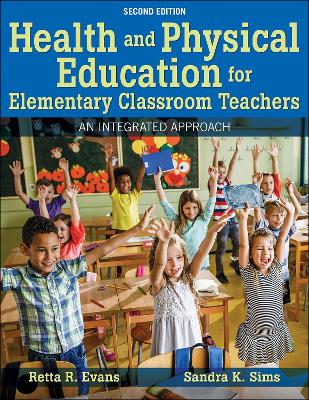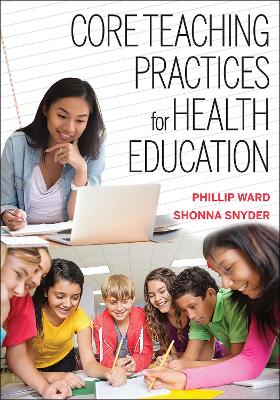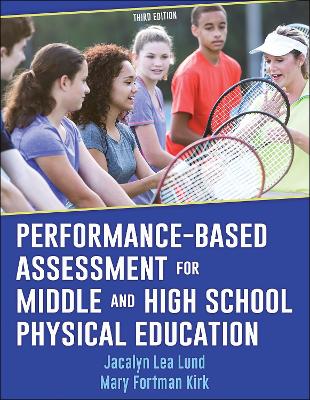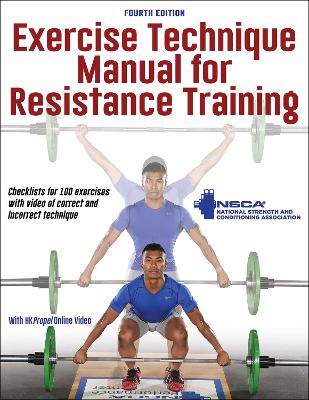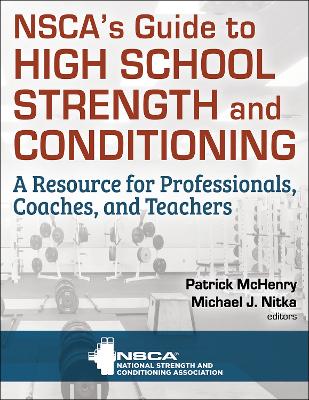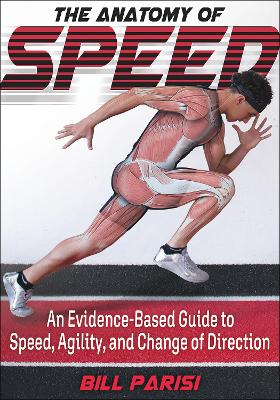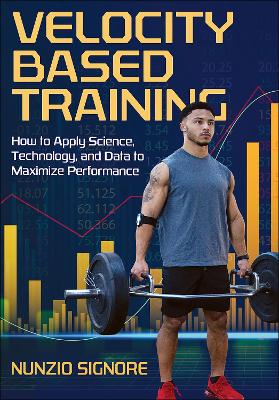Essentials of Teaching Physical Education
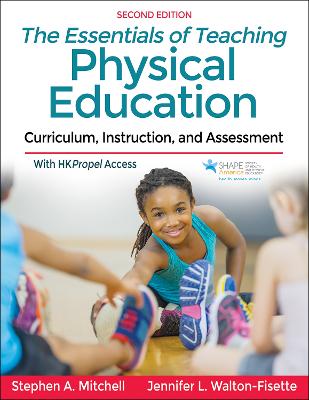 -15%
portes grátis
-15%
portes grátis
Essentials of Teaching Physical Education
Curriculum, Instruction, and Assessment
Mitchell, Stephen A.; Walton-Fisette, Jennifer
Human Kinetics Publishers
05/2021
264
Mole
Inglês
9781492598923
15 a 20 dias
885
Chapter 1. Developing Physically Literate Individuals
Promoting Physical Literacy
Academic Links to Physical Literacy
Summary
Chapter 2. Understanding a Teaching for Learning Approach
Curricular Alignment in Physical Education
Instructional Alignment in Physical Education
Summary
Chapter 3. Examining Student Motivation
Establishing a Motivating Environment
Retaining Students' Motivation
Intrinsic Versus Extrinsic Motivation
Eradicating Amotivation
Summary
Chapter 4. Understanding Social-Emotional Learning and Using Trauma-Informed Practices
Social and Emotional Learning (SEL)
Trauma-Informed Practices (TIPs)
Becoming Self-Aware Through Critical Reflection
Strategies on Fostering Resilient Learners
Summary
Part II. Teaching to the National Standards for K-12 Physical Education
Chapter 5. Standard 1: Developing Motor Skills and Movement Patterns
Competency Versus Proficiency
Motor Skills and Phases of Performance
Elementary School: K-Grade 5
Middle School: Grades 6-8
High School: Grades 9-12
Summary
Chapter 6. Standard 2: Applying Concepts, Principles, Strategies, and Tactics
Elementary School: K-Grade 5
Middle School: Grades 6-8
High School: Grades 9-12
Summary
Chapter 7. Standard 3: Achieving Health-Enhancing Physical Activity and Fitness
Elementary School: K-Grade 5
Middle School: Grades 6-8
High School: Grades 9-12
Summary
Chapter 8. Standard 4: Exhibiting Responsible Personal and Social Behavior
Elementary School: K-Grade 5
Middle School: Grades 6-8
High School: Grades 9-12
Summary
Chapter 9. Standard 5: Recognizing the Value of Physical Activity
Elementary School: K-Grade 5
Middle School: Grades 6-8
High School: Grades 9-12
Summary
Part III. Building the Curriculum
Chapter 10. Unit and Lesson Planning
Unit Planning
Lesson Planning
Summary
Chapter 11. Planning Developmentally Appropriate Content
Types of Knowledge
Standards, Outcomes, and Assessments
Learning Domains
Students' Prior Knowledge and Experiences
Sequencing of Content and Task Progressions
Modifying Content
Summary
Chapter 12. Curriculum Models as Organizing Frameworks
Skill Theme Approach
Teaching Personal and Social Responsibility
Tactical Games Model
Sport Education Model
Fitness Education
Adventure Education
Outdoor Education
Cultural Studies
Implementing Curriculum Models Within Units of Instruction
Summary
Part IV. Instruction and Assessment
Chapter 13. Establishing and Managing a Safe Learning Environment
Setting Rules for Your Gymnasium
Managing Student Behavior
Maximizing Learning and Activity Time
Managing the Learning Environment During Instruction and Activity
Summary
Chapter 14. Developing Essential Teaching Skills
Exploring Instructional Styles
Employing Effective Teaching Tactics
Summary
Chapter 15. Assessing Student Learning
Purposes of Assessment
Grading Schemes
Selecting Appropriate Assessments
Type of Assessments
Organizing and Interpreting Data
Summary
Part V. Developing as a Professional
Chapter 16. 21st Century Skills in Physical Education
Framework for 21st Century Learning
21st Century Student Outcomes
21st Century Support Systems
Summary
Chapter 17. Advocacy, Professionalism, and Professional Development
Advocating for Your Profession
Professional Development Opportunities
Summary
Chapter 1. Developing Physically Literate Individuals
Promoting Physical Literacy
Academic Links to Physical Literacy
Summary
Chapter 2. Understanding a Teaching for Learning Approach
Curricular Alignment in Physical Education
Instructional Alignment in Physical Education
Summary
Chapter 3. Examining Student Motivation
Establishing a Motivating Environment
Retaining Students' Motivation
Intrinsic Versus Extrinsic Motivation
Eradicating Amotivation
Summary
Chapter 4. Understanding Social-Emotional Learning and Using Trauma-Informed Practices
Social and Emotional Learning (SEL)
Trauma-Informed Practices (TIPs)
Becoming Self-Aware Through Critical Reflection
Strategies on Fostering Resilient Learners
Summary
Part II. Teaching to the National Standards for K-12 Physical Education
Chapter 5. Standard 1: Developing Motor Skills and Movement Patterns
Competency Versus Proficiency
Motor Skills and Phases of Performance
Elementary School: K-Grade 5
Middle School: Grades 6-8
High School: Grades 9-12
Summary
Chapter 6. Standard 2: Applying Concepts, Principles, Strategies, and Tactics
Elementary School: K-Grade 5
Middle School: Grades 6-8
High School: Grades 9-12
Summary
Chapter 7. Standard 3: Achieving Health-Enhancing Physical Activity and Fitness
Elementary School: K-Grade 5
Middle School: Grades 6-8
High School: Grades 9-12
Summary
Chapter 8. Standard 4: Exhibiting Responsible Personal and Social Behavior
Elementary School: K-Grade 5
Middle School: Grades 6-8
High School: Grades 9-12
Summary
Chapter 9. Standard 5: Recognizing the Value of Physical Activity
Elementary School: K-Grade 5
Middle School: Grades 6-8
High School: Grades 9-12
Summary
Part III. Building the Curriculum
Chapter 10. Unit and Lesson Planning
Unit Planning
Lesson Planning
Summary
Chapter 11. Planning Developmentally Appropriate Content
Types of Knowledge
Standards, Outcomes, and Assessments
Learning Domains
Students' Prior Knowledge and Experiences
Sequencing of Content and Task Progressions
Modifying Content
Summary
Chapter 12. Curriculum Models as Organizing Frameworks
Skill Theme Approach
Teaching Personal and Social Responsibility
Tactical Games Model
Sport Education Model
Fitness Education
Adventure Education
Outdoor Education
Cultural Studies
Implementing Curriculum Models Within Units of Instruction
Summary
Part IV. Instruction and Assessment
Chapter 13. Establishing and Managing a Safe Learning Environment
Setting Rules for Your Gymnasium
Managing Student Behavior
Maximizing Learning and Activity Time
Managing the Learning Environment During Instruction and Activity
Summary
Chapter 14. Developing Essential Teaching Skills
Exploring Instructional Styles
Employing Effective Teaching Tactics
Summary
Chapter 15. Assessing Student Learning
Purposes of Assessment
Grading Schemes
Selecting Appropriate Assessments
Type of Assessments
Organizing and Interpreting Data
Summary
Part V. Developing as a Professional
Chapter 16. 21st Century Skills in Physical Education
Framework for 21st Century Learning
21st Century Student Outcomes
21st Century Support Systems
Summary
Chapter 17. Advocacy, Professionalism, and Professional Development
Advocating for Your Profession
Professional Development Opportunities
Summary

